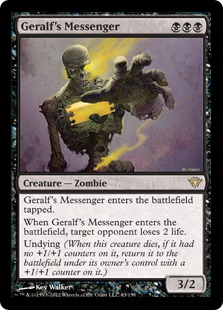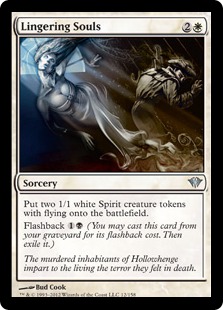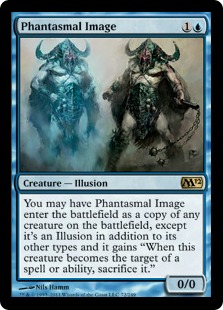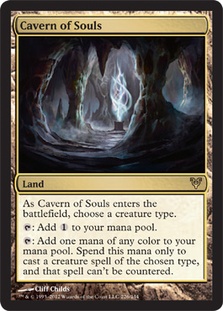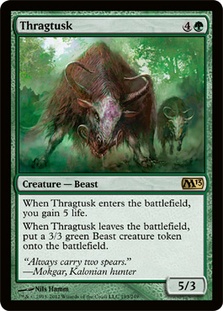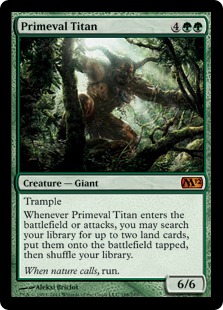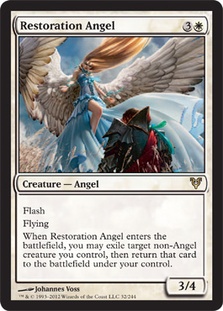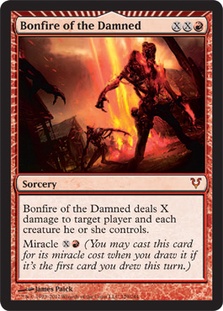Since the switch to the Magic 20XX format we currently enjoy, Standard has been fairly high powered in these three months in which there are two core sets legal at the same time.
During this time, there are a full eight sets that are Standard legal, so all sets being equal, there will be more top tier cards. When there are more cards in a format, the middling cards that were perfectly playable a few short months ago now become much worse. Take a deck like B/W Tokens. It hasn’t lost anything, and it isn’t particularly hated out. While Bonfire of the Damned and Thundermaw Hellkite are very good against Lingering Souls and friends, it’s possible to overcome those cards if that’s all you are interested in.
The real reason that B/W Tokens isn’t that good is because it’s not one of the more powerful things you can be doing anymore. On the flip side, Birthing Pod decks are quite good with a ton of cards because Birthing Pod decks want a ton of options and are willing to play singletons to have those options. After the release of Innistrad, Birthing Pod decks simply lacked the tools to play powerful creatures. The cry of “These Pod decks can’t win unless they draw Pod!” or “There’s nothing at five mana other than Acidic Slime!” was a familiar one, and the truth was that the creature set for these decks simply wasn’t that powerful. Nobody is saying that now!
In addition to having powerful cards, there are some unintended redundancies that allow you to play more than four copies of a certain card. Temple Bell in M11 joined Howling Mine in M10 (and Font of Mythos from Conflux!) to give us a critical mass of basic Howling Mine effects to fuel a variety of Time Warp strategies (I personally enjoyed Runeflare Trap). Last year was probably the best example, when the coexistence of Ponder and Preordain fueled both a Splinter Twin combo deck and a Pyromancer Ascension combo deck. In fact, I played both strategies in one deck to a heartbreaking ninth place finish at an SCG Standard Open.
Lands (22)
- 7 Mountain
- 11 Island
- 4 Scalding Tarn
Spells (38)
- 4 Lightning Bolt
- 4 Mana Leak
- 4 Ponder
- 3 Burst Lightning
- 4 Into the Roil
- 4 Pyromancer Ascension
- 2 Spell Pierce
- 3 Jace's Ingenuity
- 4 Preordain
- 2 Call to Mind
- 4 Gitaxian Probe
Sideboard

The current analogy is Rampant Growth and Farseek. It’s quite clear that Wizards doesn’t really want both cards to be Standard legal at the same time, but this is the only way they can get a card like Farseek to replace a card like Rampant Growth. Now, if only there was a deck that could take advantage of eight Rampant Growths…
Creatures (14)
Lands (26)
Spells (20)
Sideboard

I love Reid’s deck simply because he chose to play so many of the best cards in the format in addition to taking advantage of the extra redundancy available. When the power level is exceptionally high in a particular format, it’s generally best to play as many of these powerful cards as you can. While there are certainly limitations—your cards can’t actively work against each other (Thalia and Snapcaster Mage) and you have to be able to cast your spells—power trumps synergy when there is so much power to be had.
That being said, what ARE the best cards in Standard? When it comes to choosing a deck to play, it’s important to keep the format context in mind. The fact that Restoration Angel is in Standard is really oppressing cards like Dungeon Geists and Hellrider, which are powerful enough to play in a vacuum but not powerful enough to play in the reality in which we live in. However, some cards just have more power than others, and that’s primarily what we will be looking at.
Honorable Mentions
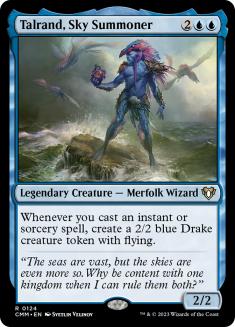
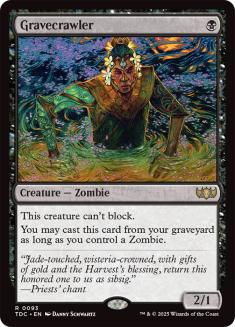
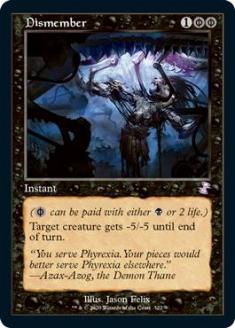
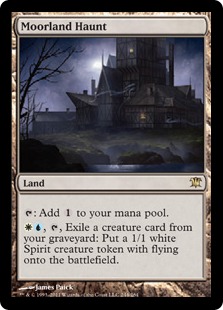
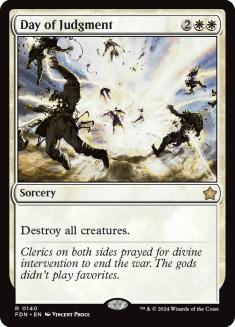
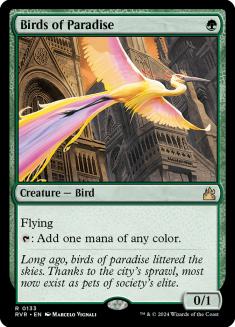
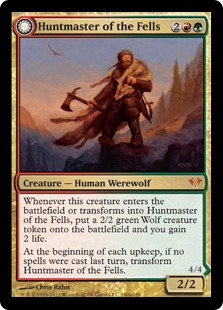
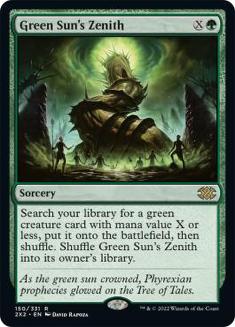
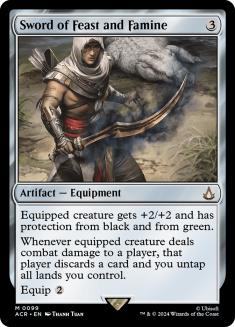
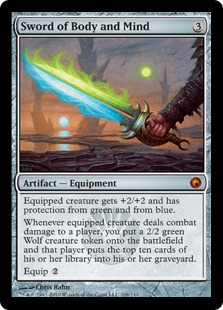
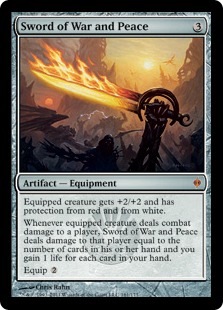
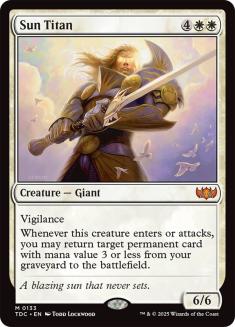
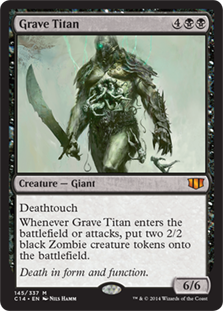
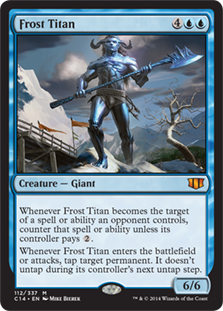
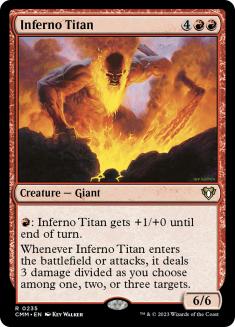
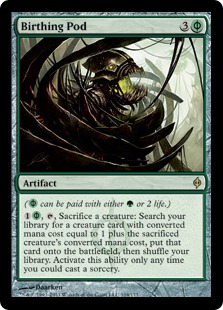
I honestly had an extremely difficult time cutting the list to ten, and there are far more cards that are high on power that aren’t even listed in the Honorable Mention category! It just goes to show that you actually have quite a few options when you are building decks. In truth, it’s probably just correct to play all the good cards together. While it would be nice to play nothing but the cards below, there are various restrictions on doing so. Playing the second tier of cards isn’t much worse.
10. Geralf’s Messenger
I hate this card more than any card printed in the past few years. I think it’s such a huge mistake for Wizards to print cards like this, which is basically similar to an all-star card like Kitchen Finks only far more punishing. Causing life loss is generally better than gaining life, and +1/+1 counters are almost always preferable to -1/-1 counters. The only thing that really holds this guy back is that black is by far the worst color in Standard and there are few other cards that this guy plays well with. I hate trying to play against this guy as it’s incredibly difficult to either race or kill it. You almost always have to trump it, and I hate being resigned to going over the top of three-drops.
9. Lingering Souls
Cards with cheaper flashback costs than normal costs are always scary, and this is no exception. You have to go through some hoops to realize the power of this card currently, as four power of fliers split over five mana is not exactly large comparatively speaking. This card is poorly positioned in Standard at the moment, but it’s still an absurd card. I played Midnight Haunting for value at an SCG Invitational once!
8. Delver of Secrets
It’s amazing how good “random” cards can be. Much like Bloodbraid Elf, Delver of Secrets can be both frustrating to play with and play against. If they banned a 3/3 for one mana in Modern, 3/2 flying is probably one of the best Standard cards, even if variance can be rough at times.
7. Phantasmal Image
Standard is a creature dominated format, and there are very few creatures that are inefficient to copy. The Illusion drawback exists, but it’s difficult to target the Image without spending a card and you often get a trigger from one of the plethora of creatures with enters the battlefield abilities.
6. Cavern of Souls
I’m not sure what was going on with this card. I remember being happy when I drew Primal Beyond, and this just embarrasses that on so many level. First, it never comes into play tapped. Second, it can be used on any tribe, not just Elementals. Finally, and most absurdly, it makes your creatures uncounterable. Boseiju, Who Shelters All was apparently extremely underpowered.
5. Thragtusk
Much of what I said about Geralf’s Messenger applies to this card, except that this card is much easier to cast and plays well with a ton of other good cards. How are you supposed to interact with this card? Can’t race it, can’t attrition it, so the only realistic option is to go over the top with something like….
4. Primeval Titan
I’m fairly certain that if you want to go big, you go here, as has mostly been the case for the past year or so. Six mana in green is much less than six mana in other colors
3. Restoration Angel
While I tried to ignore format synergies for most of the cards on this list, Restoration Angel benefits from having a plethora of creatures to effectively Blink with it. Besides, what Standard environment doesn’t have enters the battlefield triggers? There’s also the vastly undercosted 3/4 flying flash part. Getting value from Blinking Blade Splicer, Borderland Ranger, Huntmaster of the Fells, Strangleroot Geist, Geist of Saint Traft, Snapcaster Mage, Augur of Bolas, Zealous Conscripts or any of the Titans is just gravy.
2. Bonfire of the Damned
So let’s see. Of the other nine cards on this list, eight are creatures, and the other makes creatures uncounterable. So let’s just say that Standard is quite creature based and you need a card that can help break creature mirrors. While you could attempt to grind them out with Gavony Township (not a bad idea!), Bonfire of the Damned is here to do its best Flame Wave impression. This is easily the swingiest card in Standard, as a miracled Bonfire of the Damned always swings the game hugely in favor of the player that miracled the Bonfire. Much like Delver of Secrets, the respect of this card’s potential fundamentally changes the way decks are built and games are played. I’ll be honest. I hate it when cards that are this swingy are this good. I’ve never cast one of these in my life.
1. Snapcaster Mage
In a lineage that goes from Wild Mongrel to Tarmogoyf to Dark Confidant , Snapcaster Mage proudly takes the mantle of the best two-drop of all time. The flexibility this card provides is just surreal. While Phyrexian mana certainly pushes the speed of this card, it’s still excellent as a flash Silvergill Adept / Mystic Snake / Nekrataal / whatever split card. I love this card, and I want to play it whenever possible. If you’re wondering why planeswalkers aren’t anywhere close to this list, this is a good place to start. There are other reasons, but flash creatures are nightmares for protecting planeswalkers, and this one is pretty good.
Cards That Are NOT Off the Scale in Terms of Power Level
Vapor Snag
While it is an extremely important piece of the Delver puzzle, it’s far more important as an effective tool to use with Delver of Secrets and Snapcaster Mage. Unsummon +1 damage is NOT broken.
Ponder
Again, just very good with the other pieces we have. While it is an excellent tool to fix your draws, the Delver/Snapcaster synergies push it over the top. Does anyone remember when nobody but Sean McKeown wanted to play Ponder in Block Constructed/Standard Faeries? If it was broken, why wasn’t it universally adopted in a deck VERY similar to current Delver decks? The answer is synergy.
When you’re building your deck, you have to ask yourself why you aren’t playing with the best cards. There are so many very powerful cards—I could’ve made a Top 20 list without reaching for anything—you should probably just be playing as many of them as you can. It’s not like the cards on this list don’t have synergy with each other. You can have your cake and eat it too!
So why are you playing Trading Post again? (Assuming you want to win.)

